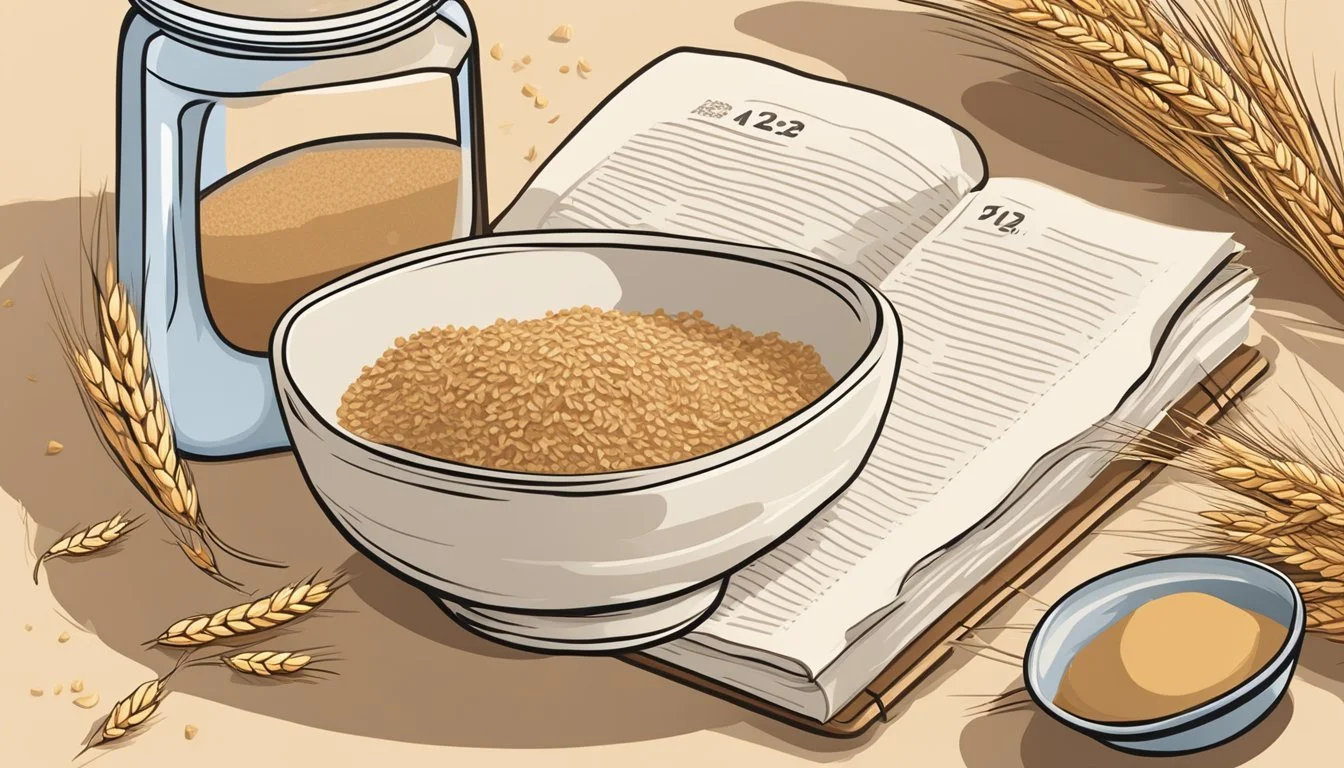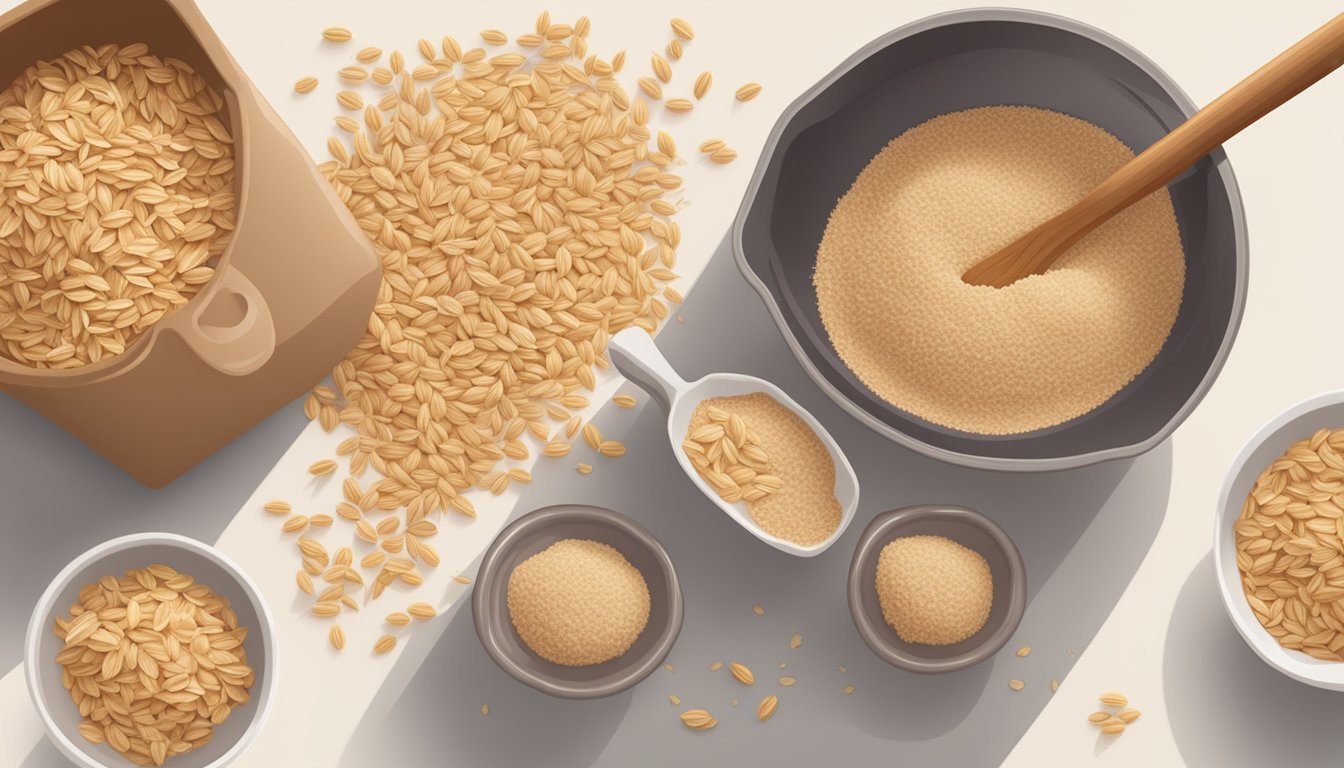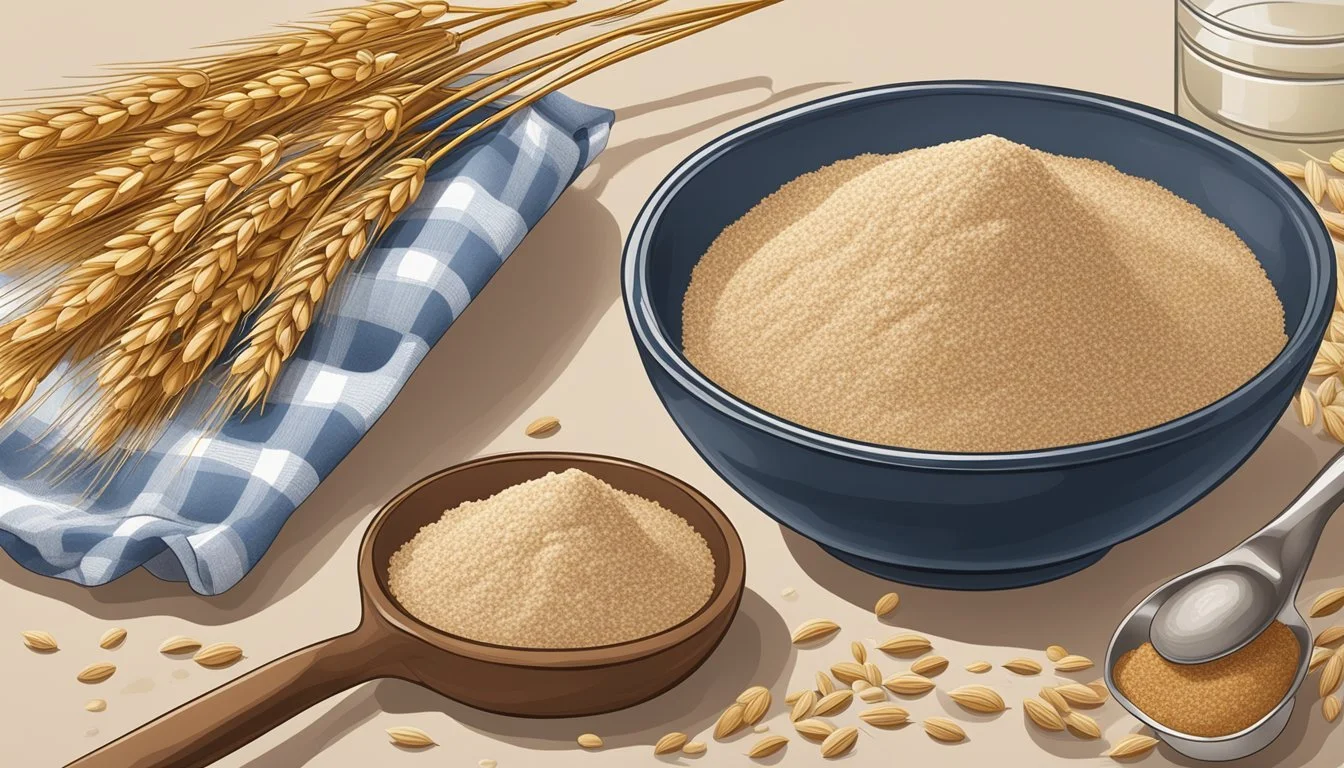How to Substitute Wheat Bran for Oat Bran in Baking
A Simple Guide
Wheat bran is a common ingredient in baking, known for its high fiber content, nutritional benefits, and its ability to add texture to baked goods. However, due to dietary preferences or restrictions, some individuals may seek suitable substitutes for wheat bran. Oat bran is an excellent alternative that can be used in various recipes. It provides similar health benefits, including fiber and essential nutrients, while also often being a choice for those following gluten-free diets, though not inherently gluten-free itself.
Substituting oat bran for wheat bran in baking can be straightforward. The substitution generally can be done at a one-to-one ratio, which means replacing the same amount of wheat bran called for in a recipe with oat bran. Oat bran is versatile and can blend well with other ingredients, maintaining the recipe's structure and final texture. Being neutral in flavor, oat bran absorbs the taste profiles of the other ingredients, making it an adaptable substitute in a wide range of baked products, from bread and muffins to pancakes and waffles.
Understanding Wheat Bran and Its Role in Baking
Wheat bran is the outer layer of the wheat kernel, a by-product of milling in the production of refined grain products. In baking, it contributes a distinctive nutty flavor and a robust texture, while also adding nutritional value to the foods it's incorporated into.
Nutritional Profile of Wheat Bran
Fiber Content: A significant source of dietary fiber, beneficial for digestive health.
Protein: Contains a modest amount of protein.
Vitamins and Minerals: A good provider of essential nutrients, including B-vitamins, magnesium, and selenium.
Culinary Characteristics of Wheat Bran
Texture: When added to baked goods, wheat bran imparts a heartier, denser texture. This can affect the moisture and structural properties of the final product, making it important to balance out with wet ingredients.
Flavor Profile: Wheat bran offers a nutty, earthy flavor that can enhance a variety of recipes, from bread to muffins.
Usage in Recipes: Typically, wheat bran can be included in recipes either by replacing a portion of flour with bran or by being added as an extra ingredient, depending on the desired texture and nutritional content.
Identifying Suitable Substitutes for Wheat Bran
When substituting wheat bran in baking, several alternatives provide similar health benefits, like fiber content, while maintaining the dish's texture and taste.
Oat Bran as a Primary Substitute
Oat bran is often the top choice as a wheat bran substitute because of its high soluble fiber content, which can help to lower cholesterol. It closely mimics the texture and nutritional profile of wheat bran and can be used in equal proportions in recipes.
Exploring Other Bran Substitutes
Rice bran and corn bran are excellent alternatives with a different nutrient profile but similar fiber content. They can be used in a 1:1 ratio when replacing wheat bran.
Buckwheat flour contains fiber but also offers a unique, robust flavor, suitable for certain recipes.
Utilizing Flour Alternatives
Flour alternatives can serve as substitutes to wheat bran in baking. Notable options include:
Oat flour: Offers a mild taste and is suitable for gluten-free recipes.
Rye flour: Has a distinct flavor and pairs well with hearty bread.
Coconut flour and almond flour: They are lower in carbohydrates and higher in fat, making them suitable for keto recipes, albeit less fibrous.
Incorporating Seeds and Other Grains
Flaxseed (or flax seeds): Rich in both soluble and insoluble fiber and omega-3 fatty acids, ground flaxseed can be a healthful substitute for wheat bran.
Psyllium husk: Provides a substantial amount of soluble fiber, aiding in digestive health.
Rolled oats: While milder in flavor, they can contribute to the texture and fiber content of baked goods.
Cornmeal: This can replace wheat bran to add texture in recipes like cornbread without greatly altering the flavor.
How to Replace Wheat Bran in Specific Recipes
When substituting wheat bran with oat bran in baking, it is essential to account for differences in flavor and texture. Each recipe category requires specific adjustments to ensure that the replacement promotes a similar nutritional profile and satisfactory end result.
Adjustments for Breads and Muffins
For breads and muffins, replace wheat bran with oat bran in a 1:1 ratio to maintain dietary fiber content without compromising the structure. Oat bran can offer a softer texture, so it's advisable to mix it with whole-wheat flour instead of all-purpose flour to keep the integrity of the baked goods. To enhance flavor, consider adding cinnamon, honey, or raisins.
Tweaks for Pancakes and Waffles
Pancakes and waffles benefit from oat bran's fine texture, imparting a tender crumb. Substitute oat bran equally for wheat bran, and to ensure pancakes and waffles stay fluffy, one might need to increase the leavening agent slightly. Add a sweet flavor with natural sweeteners like honey or balance it with a dash of cinnamon.
Healthy Additions to Breakfast Cereals
Enrich breakfast cereals, such as granola, porridge, or smoothies, with oat bran instead of wheat bran to boost the dietary fiber content. The addition should be subtle, given oat bran's mild taste, and complementary ingredients like fruits, honey, or raisins can be added for a balanced flavor profile.
Baking Substitutions in Desserts
Replacing wheat bran with oat bran in desserts like cookies or cakes requires careful consideration of the moisture content. Oat bran can absorb more liquid, which may necessitate a slight increase in wet ingredients to retain the desired moistness. Stick to a 1:1 substitution ratio and adjust the sweetness as oat bran may contribute a subtler flavor.
Health and Nutritional Considerations
Substituting wheat bran for oat bran in baking requires careful consideration of their distinct nutritional profiles and health impacts. This section explores the dietary fiber content, the implications for gluten-related allergies, and the effects on cholesterol and heart health.
Digestive Health and Fiber Content
Wheat bran is particularly high in dietary fiber, which is beneficial for digestion. The fiber found in wheat bran helps to maintain bowel health and regularity. In comparison to oat bran, wheat bran typically offers a higher amount of fiber, which can aid in managing blood sugar levels and may contribute to longer-term satiety after meals.
Fiber Content Comparison (per 100g):
Oat Bran: Approximately 15g of fiber
Wheat Bran: Approximately 40g of fiber
Gluten-Free Baking and Allergies
When baking for individuals with celiac disease or gluten sensitivities, it is important to recognize that wheat bran contains gluten, unlike oat bran which is naturally gluten-free. Therefore, substituting wheat bran in recipes will render the end product unsuitable for those with these conditions.
Cholesterol and Cardiovascular Health
Oat bran is renowned for its heart health benefits, notably due to its ability to lower cholesterol levels. Its high content of soluble fiber, particularly beta-glucans, has been shown to reduce LDL (bad) cholesterol, potentially decreasing the risk of heart disease. Substituting with wheat bran might not have the same extent of effect when it comes to cholesterol and cardiovascular health, even though it is still a high-fiber option within a heart-healthy diet.
Additional Baking Tips and Tricks
When substituting wheat bran for oat bran in baking, understanding the impact on proportions, flavors, texture, and personal taste preferences is crucial.
Understanding Proportions and Measurements
Substituting wheat bran for oat bran should be done on a 1:1 ratio for accuracy in measurements. However, one might consider that wheat bran has less fat and more fiber, potentially altering the calorie count and requiring adjustments to wet ingredients like eggs or water.
Flavor Enhancements and Sweeteners
Wheat bran can impart a slightly nutty flavor to baked goods. To enhance this, one might add a modest amount of honey or other sweeteners to achieve a balanced, sweet flavor. A pinch of salt can also sharpen and bring out these flavors, catering to the taste buds without overpowering the wholesome essence of the bran.
Texture and Consistency Adjustments
The texture of baked goods may shift towards a chewier texture with wheat bran. To avoid a dense result, consider integrating a leavening agent like baking powder to maintain lightness. If a smoother result is desired, one could blend the bran with yogurt or eggs to enhance moisture content.
Catering to Taste Preferences
Personal preference plays a significant role in baking with bran substitutes. For those preferring a low-carb option with high fiber, wheat bran is an excellent choice. It's essential to consider how the flavor and texture can vary from oat bran, which tends to be sweeter, and adjust the recipe accordingly with natural sweeteners or additional flavorings to match desired taste profiles.
Conclusion
In the realm of baking, wheat bran and oat bran both serve as healthful additions that boost fiber content and contribute a distinct, nutty flavor to assorted baked goods. While these two brans are not precisely interchangeable due to their different textural properties and flavors, they can often substitute for one another with careful consideration of the specific recipe and desired outcome.
When replacing wheat bran with oat bran, one must remember that oat bran may impart a milder taste and a smoother texture. This makes it a versatile flour substitute, especially suitable for recipes where a delicate taste is preferable. Here is a concise guideline on substituting oat bran for wheat bran:
For every 1 cup of wheat bran, use:
1 cup of oat bran for a direct substitute.
Adjust liquid in the recipe as oat bran may absorb more moisture.
Additionally, oat bran’s health benefits are notable, including its high fiber content, which aids in digestion and can have a positive impact on cholesterol levels. Its profile rich in omega-3 fatty acids makes it a nutritious addition to anyone’s diet.
It is worth experimenting with substitutes to achieve the best results for specific recipes. Adjustments in moisture and flavor may be necessary, but exploring these options can lead to satisfactory and sometimes even superior baked creations. Bakers can confidently utilize oat bran as a healthful and tasteful substitute for wheat bran, enriching their dishes without compromising on texture or taste.






